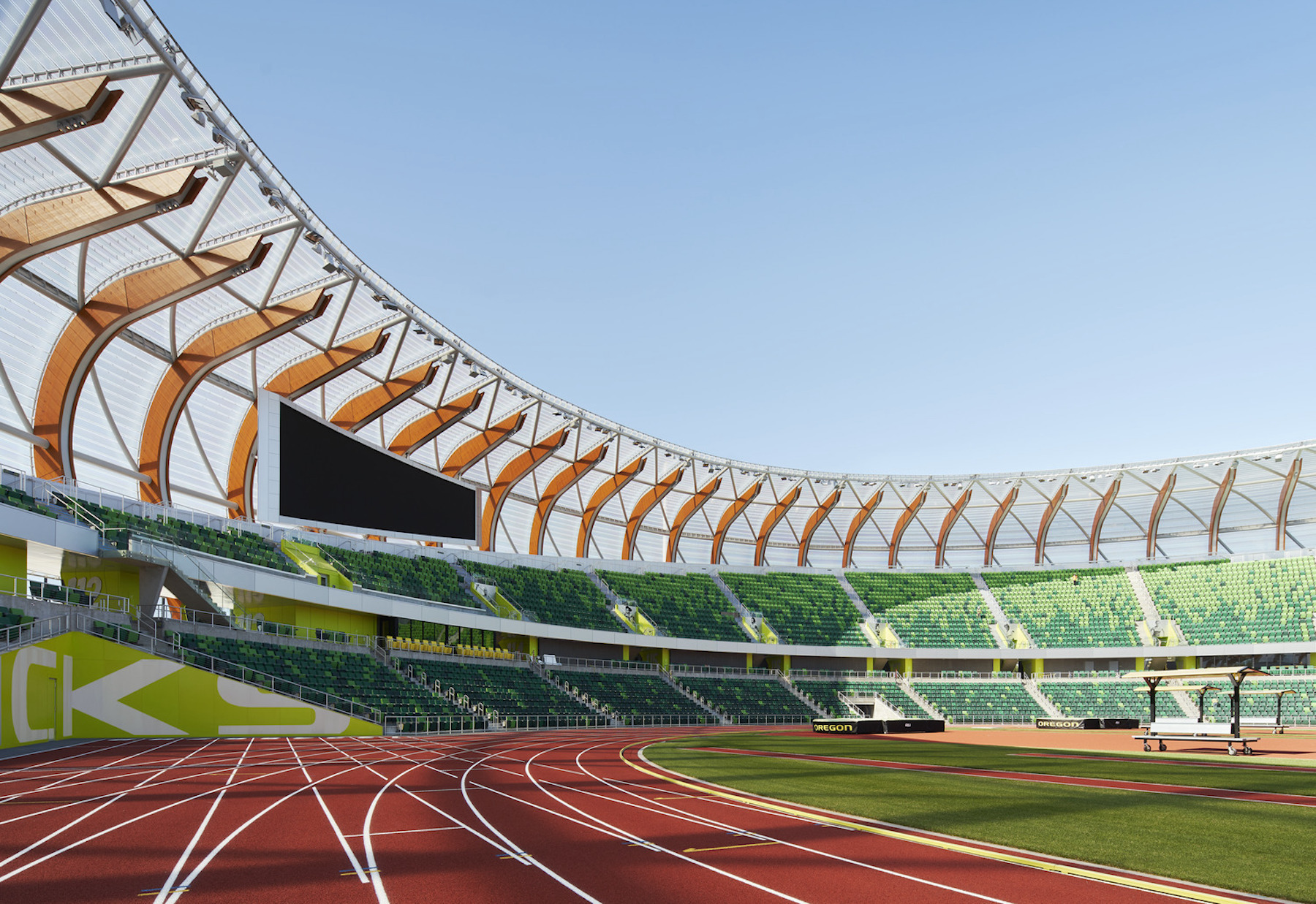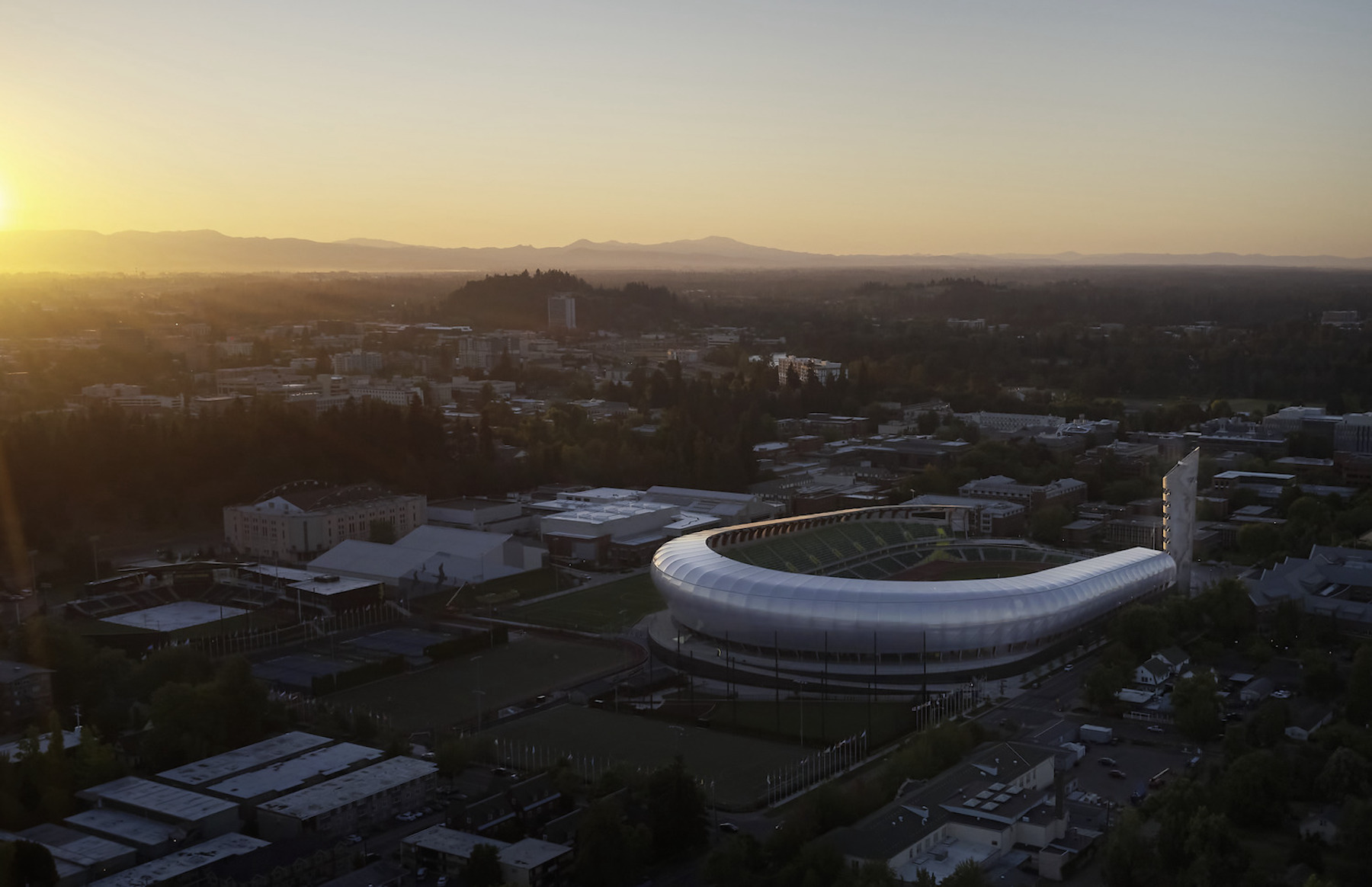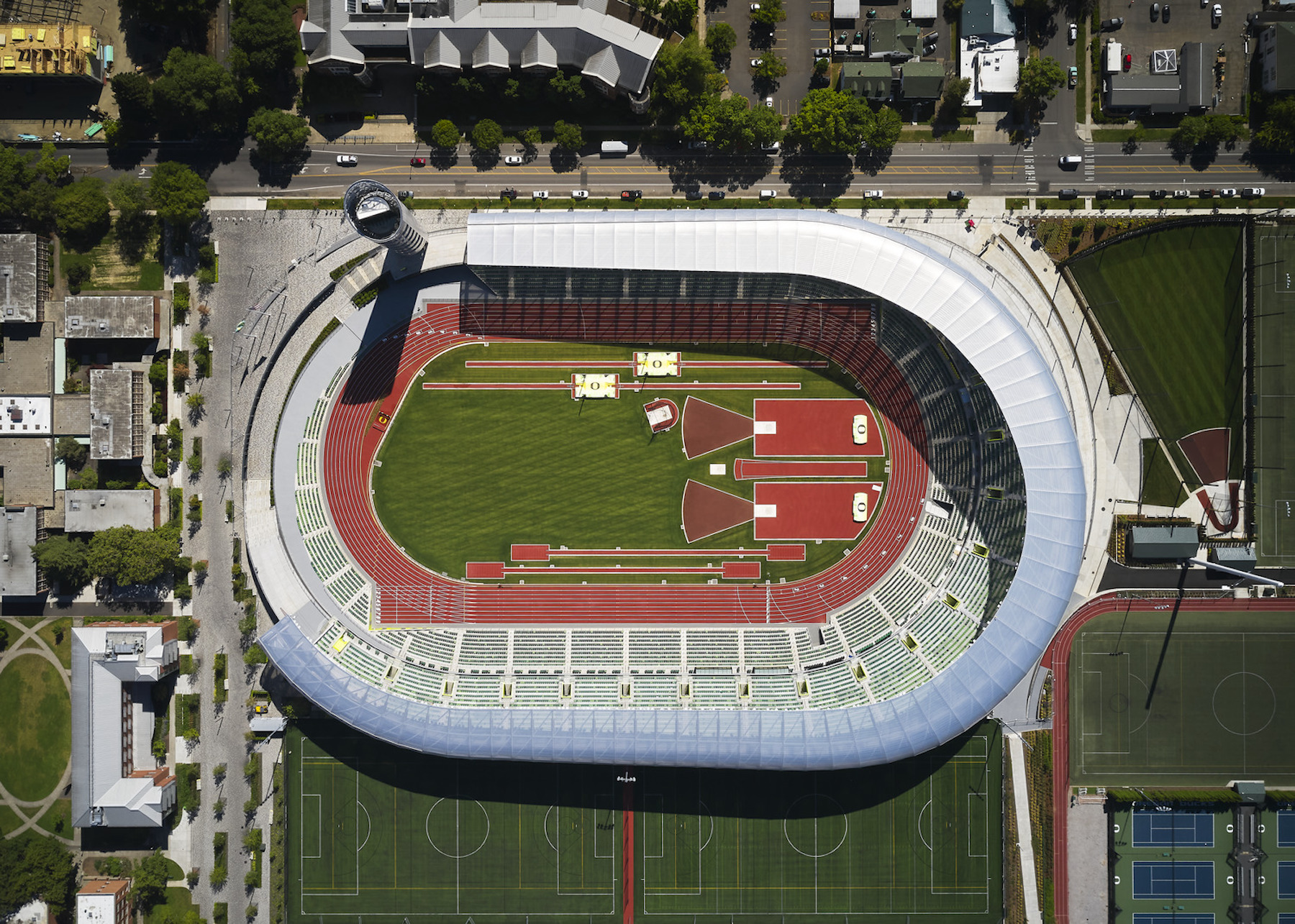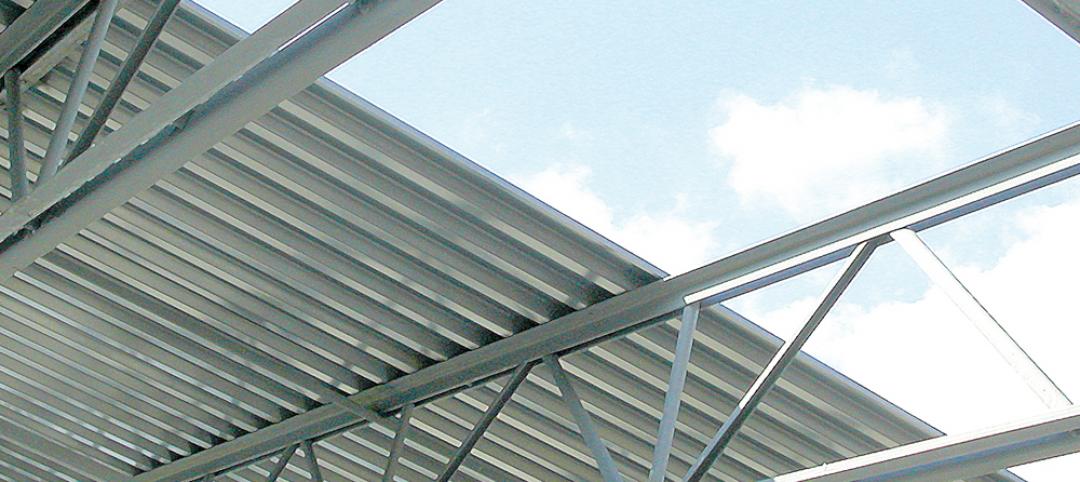The renovation of the University of Oregon’s Hayward Field had the goal of creating the “finest track and field facility in the world.” The two-year project revamped both the athlete’s and spectator’s experience. It included comfortable seating for every patron, a diversity of in-stadium food and beverage amenities, great sight lines, and close proximity to athletes and the competition. An 8,600 sf museum dedicated to the history of Oregon track & field tells the story of legendary coach Bill Bowerman and the birthplace of Nike.
Beneath the stadium is nearly 40,000 sf dedicated to training and recovery. Team amenities include: an indoor practice area (including a six-lane, 140-meter straightaway and two-story interior space for long jump, triple jump, throws, and pole vault); 100-seat team auditorium; team locker rooms, lounge and shared study spaces; weight training; equipment work-space, offices, storage and check-out; sports medicine and active/passive recovery; hydrotherapy, training and treatment; anti-gravity treadmills; nutrition station; and barber shop.
The seating bowl and roof are flowing and asymmetrical, growing in height to the southwest corner of the building. The form of the building appears to be in motion, and also enhances athlete and fan experiences by packing the greatest number of seats and stadium amenities nearest the track’s finish line.
The facility is composed of three primary components: the base, the seating bowl, and the roof canopy. The base encloses the training and team facilities and supports the stadium’s main public concourse above. It is clad in trapezoidal precast concrete panels that ground the building visually from all sides. The panel shapes all lean in the direction of the runners on the track—a nod to the theme of movement.
The bowl was raised off the main concourse to maximize fan flow and to open the stadium to views and daylight. Clad with a metal mesh screen on its underside, the bowl became a canvas for branding and connections to the site’s storied history and is visible to all from the public concourse and beyond.
The soaring wood roof canopy structure was inspired by the Pacific Northwest and acknowledges Hayward Field’s historic wooden grandstands. Stadium environments are typically dark and in shadow because of solid roof structures and materials, but this facility’s ETFE roof allows daylight in, while providing rain and wind protection for fans. A powerful metaphor of the stadium as the body of an athlete emerged with the wood canopy structure being the “ribs” that support and protect the heart with a translucent “skin” roof covering.
Given the high-profile events the facility has drawn since it has reopened, including the U.S. Track & Field Olympic Trials and the World Athletic Championships, it has lived up to the project goal of creating a world-class venue.
On the Building Team:
Owner and/or developer: University of Oregon
Design architect: SRG Partnership
Architect of record: SRG Partnership
MEP engineer: PAE Engineers
Structural engineer: MKA
General contractor/construction manager: Hoffman Construction Company


Related Stories
| May 22, 2014
Just two years after opening, $60 million high school stadium will close for repairs
The 18,000-seat Eagle Stadium in Allen, Texas, opened in 2012 to much fanfare. But cracks recently began to appear throughout the structure, causing to the school district to close the facility.
| May 20, 2014
Kinetic Architecture: New book explores innovations in active façades
The book, co-authored by Arup's Russell Fortmeyer, illustrates the various ways architects, consultants, and engineers approach energy and comfort by manipulating air, water, and light through the layers of passive and active building envelope systems.
| May 19, 2014
What can architects learn from nature’s 3.8 billion years of experience?
In a new report, HOK and Biomimicry 3.8 partnered to study how lessons from the temperate broadleaf forest biome, which houses many of the world’s largest population centers, can inform the design of the built environment.
| May 16, 2014
Toyo Ito leads petition to scrap Zaha Hadid's 2020 Olympic Stadium project
Ito and other Japanese architects cite excessive costs, massive size, and the project's potentially negative impact on surrounding public spaces as reasons for nixing Hadid's plan.
| May 13, 2014
19 industry groups team to promote resilient planning and building materials
The industry associations, with more than 700,000 members generating almost $1 trillion in GDP, have issued a joint statement on resilience, pushing design and building solutions for disaster mitigation.
| May 11, 2014
Final call for entries: 2014 Giants 300 survey
BD+C's 2014 Giants 300 survey forms are due Wednesday, May 21. Survey results will be published in our July 2014 issue. The annual Giants 300 Report ranks the top AEC firms in commercial construction, by revenue.
| Apr 29, 2014
USGBC launches real-time green building data dashboard
The online data visualization resource highlights green building data for each state and Washington, D.C.
| Apr 9, 2014
Steel decks: 11 tips for their proper use | BD+C
Building Teams have been using steel decks with proven success for 75 years. Building Design+Construction consulted with technical experts from the Steel Deck Institute and the deck manufacturing industry for their advice on how best to use steel decking.
| Apr 2, 2014
8 tips for avoiding thermal bridges in window applications
Aligning thermal breaks and applying air barriers are among the top design and installation tricks recommended by building enclosure experts.
| Mar 26, 2014
Callison launches sustainable design tool with 84 proven strategies
Hybrid ventilation, nighttime cooling, and fuel cell technology are among the dozens of sustainable design techniques profiled by Callison on its new website, Matrix.Callison.com.

















